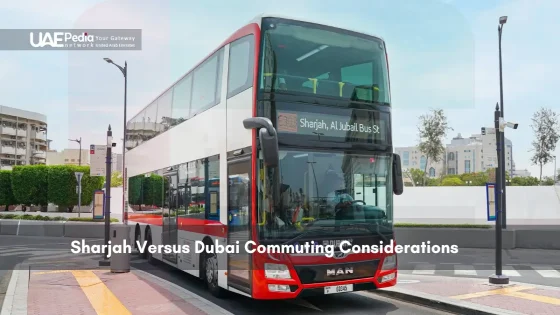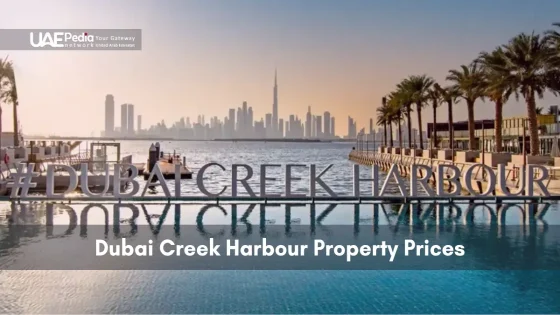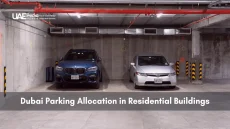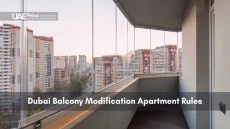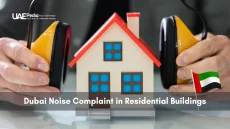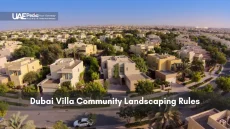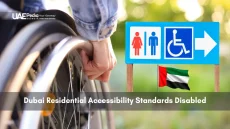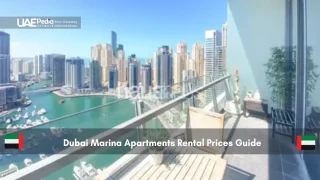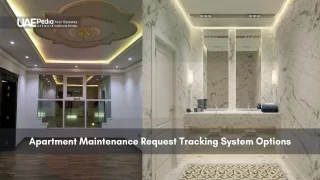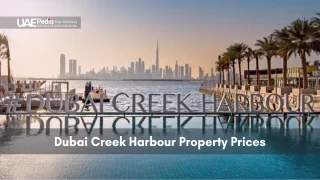Did you know over 250,000 people cross between these neighboring emirates daily? That’s more than the population of Orlando, Florida—all navigating bridges, metro lines, and cultural contrasts before their morning karak chai.
Living or working across these borders means balancing golden-hour traffic jams with unexpected perks. We’ve clocked the kilometers (and the coffee stops) to unpack what really shapes this cross-emirate experience. From RTA buses whispering through Al Khan Road to abra ferries slicing Dubai Creek, your commute becomes a lens into two distinct worlds.
This isn’t just about petrol prices or Salik toll gates. It’s about rooftop shisha spots vs. heritage souks, beachfront bike paths vs. desert-edge highways. Whether you’re a digital nomad craving metro Wi-Fi or a family prioritizing park access, each route reveals trade-offs.
- Cost & convenience: Monthly metro passes vs. car ownership math
- Hidden shortcuts: Water taxis, intercity buses, and ride-share hacks
- Lifestyle layers: How your commute shapes community ties and weekend plans
Understanding the UAE’s Commuting Landscape
Picture this: a desert metropolis where hyperloops meet heritage abras, and AI-powered metros zip past camel crossings. The UAE’s transport network feels like sci-fi meeting tradition—and it’s evolving faster than a falcon dive. Let’s unpack how 9.9 million residents move daily across this land of contrasts.
Overview of Transportation Modes
From air-conditioned bus stops to app-hailed water taxis, Emirati cities offer travel options for every pace and purpose. The metro remains king in urban hubs, while intercity buses connect quieter suburbs. Here’s the breakdown:
| Mode | Coverage | Peak Usage | Unique Perk |
|---|---|---|---|
| Metro | 2 cities | 7-9 AM | Women-only carriages |
| Public Buses | 7 emirates | Evening rush | AED 2-8 fares |
| Ferries | Coastal routes | Weekends | Instagram-worthy views |
| Ride Shares | Urban areas | 24/7 | Luxury car upgrades |
Impact of Urban Growth on Commute
Skyscrapers sprouting like desert flowers? That’s UAE’s 6.5% annual urban growth at work. Cities now deploy smart traffic lights that adapt to congestion patterns. New metro lines emerge before neighborhoods finish construction—anticipating needs rather than reacting.
Public transport ridership jumped 34% since 2020, pushing cities to innovate. Think solar-powered bus shelters with free Wi-Fi and contactless payments across all systems. It’s not just about moving people—it’s about crafting seamless urban experiences.
Economy and Infrastructure Impact on Daily Commute
Morning traffic isn’t just about cars—it’s a rolling economic indicator connecting two powerhouses. We’ve watched highways widen as GDPs climb, with every new bridge or metro line reshaping how residents move. Let’s explore how money flows and concrete pours shape your cross-emirate journey.
Economic Growth in Dubai and Sharjah
Dubai’s tourism and finance boom fuels 24/7 metro expansions, while Sharjah’s manufacturing and education sectors prioritize affordable housing near industrial zones. This creates distinct commute patterns: luxury car lanes humming toward DIFC versus school buses weaving through University City.
You’ll notice more infrastructure investment in Dubai’s smart tunnels, but Sharjah answers with wider roads to ease border congestion. As infrastructure investment reshapes both emirates, your route choices multiply—whether you’re chasing tax-free salaries or lower living costs.
Modern Infrastructure and Public Services
Compare Dubai’s driverless metro (with 5G connectivity) to Sharjah’s upgraded intercity buses. Healthcare access reveals sharp contrasts: Dubai offers premium hospitals near business hubs, while Sharjah builds community clinics near residential clusters.
Education facilities follow suit—international schools cluster around Dubai’s expat neighborhoods, whereas Sharjah prioritizes local cultural institutes. Even Abu Dhabi’s recent rail projects hint at future three-emirate connectivity, blending ambition with practicality.
Deep Dive: Sharjah Versus Dubai Commuting Considerations
Ever watched sunrise from a standstill car? That’s peak-hour reality for many crossing emirate borders. We’ve mapped the pulse of these routes—where brake lights outnumber desert stars—to help you navigate smarter.
Traffic Patterns and Peak Hour Challenges
Mornings ignite earlier here than most cities. Al Ittihad Road sees 7 AM gridlock stretching 12 km—equivalent to 25 Burj Khalifas laid end-to-end. Evening rebounds hit harder: 5:30-7 PM exits from Dubai’s Business Bay can add 40 minutes to a typical 25-km drive.
Pro tip: Thursday afternoons brew perfect storms. Weekend escapes collide with Friday prayer closures, creating unexpected snarls. One rider shared: “Leaving 15 minutes late costs me an extra hour—I set alarms for alarm clocks!”
Comparing Ferry, Bus, and Metro Options
Not all wheels spin equally. Check this breakdown for stress-free planning:
| Mode | Travel Time | Cost (AED) | Perk |
|---|---|---|---|
| Intercity Bus | 45-90 mins | 5-12 | Priority lanes |
| Metro + Bus | 60 mins | 10-15 | Wi-Fi zones |
| Ferry | 35 mins | 15 | Scenic breaks |
Buses like Route E303 become mobile offices for regulars—charging ports and discounted monthly passes sweeten the deal. Ferries charm sunset commuters but cap trips at 6 daily. Meanwhile, metro riders enjoy temperature-controlled walks between stations…until summer hits 45°C!
Beat the crawl: Try alternate routes like E311 after 8:30 AM. Carpool lanes now accept electric scooters in designated zones. And always pack snacks—because even the best transport apps can’t predict sandstorm delays.
Cost of Living and Transportation Expenses
Imagine your monthly paycheck split between golden skyscraper views and quiet suburban sunsets. Choosing where to live in the UAE often boils down to math—and how much you’re willing to trade convenience for dirhams.
Rental and Housing Cost Factors
A one-bedroom apartment near Dubai Marina averages AED 7,500 per month—enough to rent a 3-bed villa in Sharjah’s Al Nahda. That’s not just extra space; it’s a potential home office or guest room. “My Sharjah rent lets me save AED 1,200 monthly for weekend getaways,” shares Ravi, a graphic designer who swapped Business Bay for Al Qasimia.
Budgeting for Daily Commute Expenses
Public transport reveals sharper contrasts. Dubai’s metro-bus combo costs AED 15 daily, while Sharjah’s intercity buses charge AED 8. But factor in time: 90-minute bus rides vs. 45-minute drives. Car owners face AED 600/month Salik tolls—or AED 200 if they carpool. Here’s a snapshot:
| Expense | Dubai | Sharjah |
|---|---|---|
| Monthly Rent (1BR) | AED 6,500-9,000 | AED 3,800-5,200 |
| Weekly Groceries | AED 350 | AED 280 |
| Intercity Transport | AED 300-600 | AED 150-300 |
Pro tip from recent economic data: Sharjah residents often allocate 18% of income to housing vs. Dubai’s 34%. But weekend taxi fares to Dubai hotspots can nibble that savings. Balance your spreadsheet with your social life!
Cultural and Lifestyle Influences on Commuting
Ever notice how morning commutes reveal a culture’s heartbeat? In the United Arab Emirates, your route reflects more than maps—it whispers stories of heritage and evolving lifestyle priorities. From school-run SUVs packed with siblings to solo metro riders scrolling LinkedIn, transport choices mirror societal values.
Social Norms and Transport Preferences
Dubai’s metro women-only carriages aren’t just practical—they’re cultural cornerstones. One commuter shares:
“My daughters ride safely to university while I video-call relatives abroad. It’s our family rhythm.”
Contrast this with Sharjah’s family-focused bus routes connecting residential clusters to cultural institutes.Lawshere prioritize group travel discounts, reflecting communal living traditions.
Impact of Cultural Traditions on Daily Travel
Friday prayers reshape afternoon traffic patterns. Sharjah’s heritage districts empty as residents head home for family lunches, while Dubai’s business hubs hum through weekends. Abu Dhabi strikes balance—modern tram lines pause for call-to-prayer announcements, blending innovation with tradition.
- Multigenerational households favor carpool lanes over metro cards
- Beachfront bike paths attract active lifestyles in Dubai’s Marina
- Heritage festivals boost ferry usage to historical sites
These experiences show how the Emirates’ cultural mosaic shapes every journey. Whether you’re a solo adventurer or part of a large family, understanding these nuances turns daily commutes into cultural discovery lanes.
Housing, Location, and Commute Efficiency
Your front door opens to more than four walls—it’s a launchpad shaping daily rhythms. Where you plant your keys determines whether mornings feel like a leisurely stroll or a desert marathon. Let’s explore how real estate choices ripple through your schedule.
Residential Areas and Proximity to Transport Hubs
Living three blocks from a metro station? That’s golden in urban zones. One resident near Al Qusais station shares:
“My walk-to-work routine saves AED 300 monthly—enough for weekend staycations.”
Contrast this with suburban compounds requiring two bus transfers. Check theselocationcontrasts:
| Area Type | Avg. Rent (1BR) | Commute Time |
|---|---|---|
| Metro-Adjacent | AED 6,200 | 15-25 mins |
| Suburban Compound | AED 4,800 | 45-70 mins |
New waterfront apartments near Deira’s ferry terminals attract hybrid workers. Meanwhile, family-focused communities cluster around intercity bus stops. Proximity isn’t just about speed—it’s reclaimed hours for hobbies or side hustles.
Real Estate Differences Between the Emirates
Studio apartments dominate city centers, while villas with private pools sprawl in suburban zones. Budget-friendly high-rises near Sharjah’s Al Jubail station contrast with Dubai’s marina-view penthouses. Savvy residents prioritize:
- Balcony access for remote work breathers
- Grocery stores within 500 meters
- EV charging stations in parking areas
These differences create trade-offs. A smaller space near transit hubs often beats a spacious home requiring hour-long drives. As one broker notes: “Real estate here isn’t just location—it’s lifestyle math.”
Public Transportation Options: Metro, Buses, and Ferries
What if your daily commute could double as a sightseeing tour? The public transport networks linking these neighboring hubs turn routine trips into urban adventures. From air-conditioned metro cabins to breezy ferry decks, your journey becomes part of the destination.
An Inside Look at Dubai’s Transit Network
Dubai’s metro isn’t just transport—it’s a mobile office. Free Wi-Fi stretches across 75% of stations, while Gold Class cabins offer leather seats for AED 15 extra. Night owls rejoice: Friday service now runs until 1 AM. Pro tip: Use the RTA app to track real-time arrivals and claim travel rewards.
| Option | Frequency | Key Feature |
|---|---|---|
| Metro Red Line | Every 4 mins | Links airport to downtown |
| Public Buses | 15-30 mins | Priority lanes during rush |
| Water Taxi | On-demand | AED 50 marina tours |
Sharjah’s Emerging Public Transport System
Sharjah answers with new express buses connecting Al Nahda to Dubai’s Union station in 38 minutes. Their secret weapon? Contactless payment rolled out last March. “I save AED 120 monthly using the Sayer card across emirates,” shares regular commoter Amna Khalid.
Ferries now bridge cultural hotspots too. The Al Majaz-Dubai Creek route runs thrice daily, offering AED 25 sunset cruises with student discounts. Combine modes smartly: Ride a bus to Sharjah’s Al Jubail station, then grab a metro feeder shuttle.
Whether you’re hopping between emirates or exploring locally, these options prove wheels aren’t just for getting somewhere—they’re where life happens between stops.
Navigating Peak Traffic and Timing Strategies
Ever feel like your car becomes part of the pavement during rush hour? Timing your cross-emirate trip requires more precision than a desert falcon’s dive. Let’s crack the code on when roads breathe freely and when they turn into parking lots.
Best Times to Commute in Dubai and Sharjah
Mornings ignite early here. Al Ittihad Road hits gridlock by 6:45 AM—earlier than most alarm clocks. Evening rebounds peak between 5:15-7:30 PM, especially near Business Bay Interchange. For smoother sailing:
| Area | Busiest Hours | Alternative Route |
|---|---|---|
| Al Khan Road | 7:15-9:00 AM | E311 via Academic City |
| Dubai-Sharjah Border | 5:00-7:00 PM | E11 Coastal Road |
| University City | 7:30-8:30 AM | Metro Feeder Bus 14A |
Thursday afternoons brew chaos as weekend plans collide with Friday closures. One driver’s hack: “Leaving Sharjah by 5:45 AM lets me beat both school buses and border queues.”
Strategies to Avoid Congestion
Smart commuters treat timetables like treasure maps. Try these navigation hacks:
- Use intercity buses before 6:30 AM—they get priority lanes
- Book water taxis for 8:00 PM returns with sunset views
- Swap driving days: Metro on Sundays/Wednesdays when roads jam hardest
New metro expansions offer relief. The Green Line now runs until midnight, while Route E307 buses add extra trips during Ramadan. Pro tip: Check RTA’s live traffic map—green routes appear like desert oases during peak hours.
Enhancing Your Commuting Experience with Tech and Tools
Your smartphone just became your best travel buddy across emirates. Gone are the days of guessing bus schedules or fumbling for change—today’s transport tech turns cross-city journeys into seamless adventures.
Utilizing Transport Apps and Smart Cards
The Nol card isn’t just plastic—it’s a golden ticket. Tap it on Dubai’s metro gates, Sharjah’s buses, and even select taxis. One commuter raves: “Reloading through the RTA app saves me 10 minutes daily—that’s 60 hours yearly!”
| Tool | Coverage | Perk |
|---|---|---|
| Nol Card | Dubai networks | 10% fare discount |
| Sayer Card | Sharjah routes | Free transfers |
Apps like RTA Dubai and Sayer offer real-time updates. Watch your bus approach on a live map while sipping karak chai. Missed your stop? The AI assistant suggests alternate routes before panic sets in.
Advantages of Park-and-Ride Options
Why pay AED 50 for downtown parking when metro stations offer secure spots? Strategic park-and-ride hubs like Etisalat Station let you:
- Leave your car for AED 5/day
- Catch trains every 3 minutes
- Skip taxi queues during rush hours
One hybrid worker shares: “I drive 12 minutes from home, then work on the metro. My laptop battery outlasts the trip!” These options bridge the gap between car convenience and public transport affordability.
From smart cards storing multiple tickets to apps predicting sandstorm delays, tech transforms how we cross emirates. Your commute isn’t just smarter—it’s reclaiming time for what matters.
Wrapping Up: Choosing the Ideal Emirate for Your Lifestyle
Your ideal UAE home isn’t just about square footage—it’s a dance between metro schedules and morning routines. Dubai sparkles with premium amenities but demands higher budgets, while Sharjah offers breathing room for those valuing space over speed. A one-bedroom apartment here costs 40% less monthly than its Dubai counterpart, freeing funds for affordable desert safaris or creek-side dinners.
Professionals glued to tight schedules might lean toward Dubai’s metro-connected hubs. Families often prefer Sharjah’s community-focused neighborhoods near schools and parks. Infrastructure gaps? Sharjah’s expanding bus network now rivals Dubai’s famed transit system, with intercity routes slashing travel time.
Consider these final takeaways:
- Dubai’s 24/7 energy suits go-getters craving convenience
- Sharjah’s cultural heartbeat appeals to heritage enthusiasts
- Hybrid workers thrive in border areas balancing both worlds
Your choice hinges on what fuels your day—whether it’s sipping karak chai during a 25-minute waterfront stroll or hopping a metro to high-rise meetings. Abu Dhabi’s emerging rail links hint at future three-emirate fluidity, but today’s reality remains beautifully split. Measure your priorities against petrol prices, park access, and that irreplaceable evening breeze off the Gulf. Where does your balance lie?
Dubai’s Sheikh Zayed Road and Sharjah’s Al Wahda Street face intense congestion during rush hours. Dubai’s metro helps ease some pressure, while Sharjah relies more on buses and road expansions. We recommend checking apps like Google Maps or RTA’s Wojhati for real-time updates to dodge gridlock.
Yes! A one-bedroom apartment in Sharjah averages 30-40% less than Dubai. Areas like Al Nahda or Al Khan offer proximity to Dubai borders, but factor in commuting expenses. Dubai’s Discovery Gardens or International City provide budget-friendly options too—weigh location versus daily travel time.
Dubai’s metro, trams, and extensive bus network dominate for efficiency. Sharjah’s newer buses like Route E303 connect key hubs like Al Jubail to Dubai’s Union Metro. Ferries are scenic but limited—ideal for tourists. For hybrid commuters, a Nol Card works across both emirates!
Aim for off-peak windows: leave Sharjah before 6:30 AM or after 10:30 AM. Evening returns? Try before 4 PM or post-8 PM. Fridays are lighter, but watch for weekend mall traffic. Carpool lanes and RTA’s Smart Gates can shave minutes off your drive—worth the extra planning!
Privacy and family needs shape decisions. Many opt for cars due to flexible school runs or grocery trips. Women often prefer taxis like Careem or ladies-only metro cabins. Shared buses gain popularity, but route familiarity matters—ask coworkers for trusted drivers or carpool groups!
Absolutely! Apps like RTA Dubai, Wojhati, and Darb (for toll gates) give live bus/metro timings, Salik balance checks, and accident alerts. Uber/Careem offer ride-hailing with carpool discounts. For Sharjah routes, Sayer’s GPS tracking helps—bookmark these to navigate like a pro!
In Sharjah, Al Taawun and Muwaileh offer quick access to E311 highway. Dubai’s Al Qusais or Dubai Silicon Oasis provide metro links without breaking the bank. Studios near Business Bay or JLT cost more but cut travel time—ideal for those prioritizing work-life balance.
